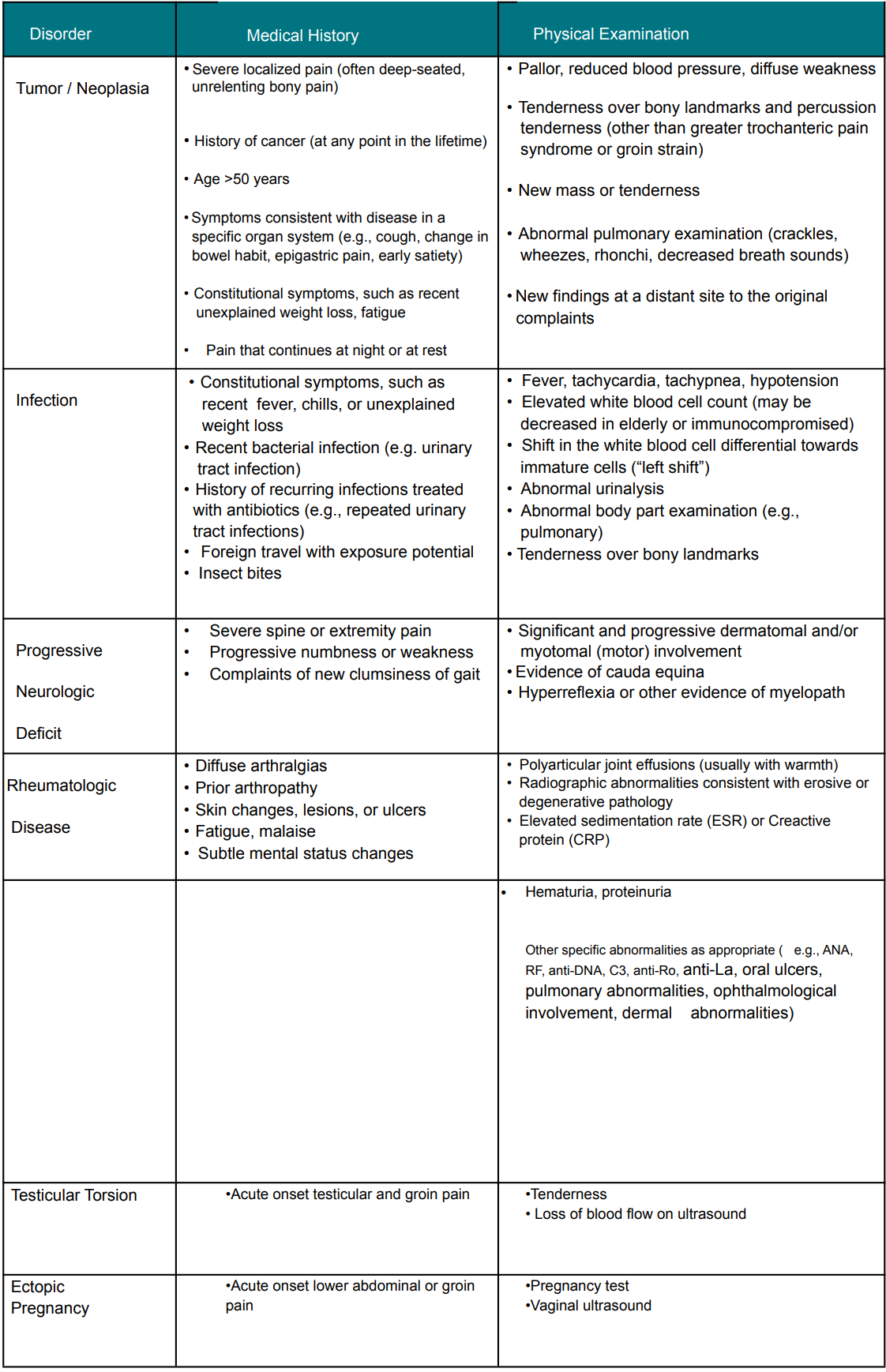General Guideline Principles for Red Flags
for workers compensation patients
The New York State workers compensation board has developed these guidelines to help physicians, podiatrists, and other healthcare professionals provide appropriate treatment for Red Flags .
These Workers Compensation Board guidelines are intended to assist healthcare professionals in making decisions regarding the appropriate level of care for their patients with ankle and foot disorders.
The guidelines are not a substitute for clinical judgement or professional experience. The ultimate decision regarding care must be made by the patient in consultation with his or her healthcare provider.
Red Flags for Hip and Groin Disorders
Red flags are observations that suggest potentially serious medical issues. The review of the history and physical examination should include looking for warning signs. These symptoms or indicators in the hip/groin may include neurological impairment, dislocations, infections, malignancies, or systemic rheumatological problems.
The New York Hip/Groin Injury Medical Treatment Guidelines contain modifications in clinical treatment brought on by the existence of “red flags,” and additional examination, consultation, or urgent/emergency action may be necessary.
Table 1. “Red Flags” for Potentially Serious Conditions Associated with Hip and Groin Pain
What our office can do if you have Hip and Groin Disorders
We have the experience to help you with their workers compensation injuries. We understand what you are going through and will meet your medical needs and follow the guidelines set by the New York State Workers Compensation Board.
We understand the importance of your workers compensation cases. Let us help you navigate through the maze of dealing with the workers compensation insurance company and your employer.
We understand that this is a stressful time for you and your family. If you would like to schedule an appointment, please contact us so we will do everything we can to make it as easy on you as possible.

Dr. Nakul Karkare
I am fellowship trained in joint replacement surgery, metabolic bone disorders, sports medicine and trauma. I specialize in total hip and knee replacements, and I have personally written most of the content on this page.
You can see my full CV at my profile page.

